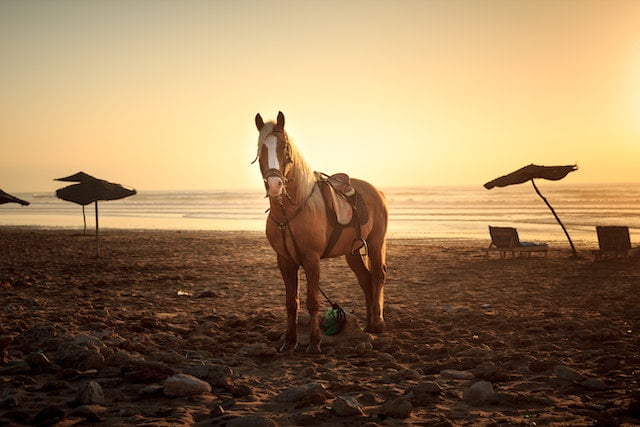1. Horse Characteristics
Horses are mammals, meaning they have hair, four legs, mammary glands, and a uterus. Horses are herbivores, meaning they eat grasses and shrubs. A horse’s head is covered with hair, except for its nose, ears, eyes, lips, and chin. Its body is covered with long hair called mane and tail. Their hooves are strong and hard, and their teeth are sharp and pointed.
2. Life Span
A horse lives between 20-25 years. A mare gives birth to foals once a year. Foals are born after about two months gestation period. Foals are able to stand at around three weeks old. At five months old, foals begin to walk. By six months old, foals can run.
3. Reproduction
Mares give birth to fillies (female horses) and colts (male horses). Mares produce a single foal per year. Foals are weaned at about 6 months old. Foals reach sexual maturity at about 2 years old.
4. Development
The first stage of a horse’s development is prenatal. Prenatal development occurs before a baby is born. In the second stage, the baby is born. After birth, the baby grows rapidly. The third stage is infancy. Infancy is the time when a child learns how to use his or her limbs and senses. The fourth stage is childhood. Childhood is the time when children learn to speak and play. The fifth stage is adolescence. Adolescence is the time when young people develop physically and mentally. The sixth stage is adulthood. Adults are mature adults who have reached physical and mental maturity.
5. Growth
As a horse ages, he or she gains weight. As a result, the horse becomes taller and stronger. A horse’s height increases from 1.5 meters (about 5 feet) at birth to 4.5 meters (about 15 feet) at full maturity. A horse’s weight increases from 100 kilograms (220 pounds) at birth to 500 kilograms (1100 pounds) at full maturity.
6. Nutrition
Horses need food to survive. Food consists of carbohydrates, fats, proteins, vitamins, and minerals. Carbohydrates provide energy for muscles and nerves. Fats supply energy for the brain and hormones. Proteins build muscles and bones. Vitamins help the body make enzymes and hormones. Minerals keep the body healthy.
7. Exercise
Exercise helps horses stay fit. When horses exercise, they breathe faster and sweat. Sweating cools the body down. Exercising makes the heart beat faster. The heart pumps blood throughout the body. Blood carries oxygen and nutrients to cells.


